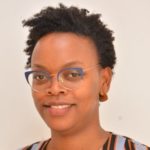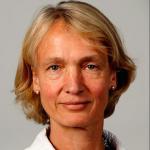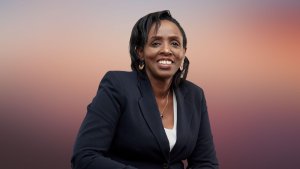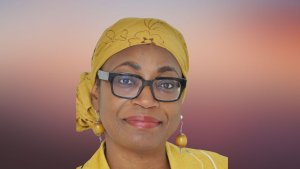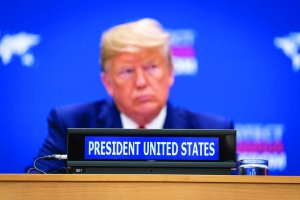An interview with African development specialist Bara Guèye
Lire cette interview en français
Bara Guèye draws on over 35 years in West African development practice. His professional activity and scientific work have used participatory action research to promote good practice in local governance of natural resources, strengthen family farming, build more resilient communities in the face of climate change and support decentralized financing models for adaptation.
He began his professional career as a teacher and researcher at the National School of Applied Economics (ENEA) in Senegal. He then worked for the Drylands Programme of the International Institute for Environment and Development (IIED, UK) for more than 10 years before setting up in 2005, the Senegalese NGO Innovation, Environment and Development in Africa (IED Afrique ) of which he was the Director until 2019. He has published several articles and reports including Guéye, B. (2014). Specialization or diversification? Divergent perspectives on irrigated rice cultivation in three large dams in the Sahel.
After this first twelve months of measures taken to combat the COVID-19 pandemic, what is the current situation in Senegal? How do you assess the actions taken by the government and NGOs?
We had our first case of COVID-19 right at the beginning of March 2020, making it now one year and a few days. It’s true that at first, Senegal like many other countries, was both shocked and surprised by this new pandemic. At a global level, I think even developed countries didn’t have a clear strategy for addressing it, which created a situation of general panic. But it prompted Senegal to enact a series of measures early on, which were extremely demanding both for the country and for ordinary people, in order to contain the disease. The population was quick to follow these measures, and they were anxious, which was both a problem but also brought its advantages, since fear of the disease meant that difficult measures were accepted from the beginning. Even in terms of the politics of the country, I noted a kind of sacred agreement between government, civil society, and opposition parties. Other agendas were shelved for the time being. This popular agreement meant that all the proposed measures were accepted: curfew, tight controls on markets, closure of non-essential shops, a ban on some forms of transport and strict limits on others, controls on movement between cities and regions, and even the shutting of places of worship. All such measures were put in place at once, but started to generate significant economic and social damage.
These adverse impacts were sufficiently damaging that control measures could not be kept in place for long, because we have an economy that depends essentially on the informal sector, and someone who relies on the informal sector cannot be without work for long. In Senegal, more than 80% of urban dwellers operate in the informal sector, with the majority earning just enough to feed themselves day-by-day. It’s quite different from those with a salary in the public sector, or private sector employees, who together constitute only a tiny minority. In order to minimize the impacts of such measures on the most vulnerable households and economic sectors (tourism, craftwork, transport, amongst others), the State made available the sum of one thousand billion FCFA (equivalent to US$ 1.736bn); this is an enormous sum for a country like Senegal, given the size of its GDP. This fund was then able to distribute food packages, and take charge of water and electricity bills for the poorest households for three months, to help get over this exacting period of time. There were also measures taken to support particular sectors, like tourism, craftwork, transport, culture, amongst others.
While communications were not brilliant at the start, a strategy to accompany the government’s measures was then put in place, working with the media, community-based organizations, religious authorities, trade unions, women, and youth associations, etc. Everyone was asked for their help, and that contributed to people accepting the measures put in place. The result of all these actions has been that the country succeeded in managing the pandemic reasonably well, such that by October 2020, there had been a very significant fall in the number of COVID cases.
But at the same time as we saw this positive evolution of the pandemic, respect for social distancing and other measures mentioned above, became weaker and weaker. You got the impression that the social threshold of tolerance for these measures had been reached if not surpassed. People had begun to suffer increasingly, which the government recognized by shifting its message to learning to live with the virus. This meant in effect taking up normal activities while trying to maintain some degree of protective measures. This situation was reinforced by the fact that infection rates had fallen, and the population reached the conclusion that COVID had been defeated, leading to an abandonment of all controls. People went back to their normal lives and way of doing things pre-pandemic, and left behind the protective measures whether in public spaces, in transport, family occasions, etc. The government equally could not continue to force people to comply, given the economic, social, and political impacts. The consequence has been an explosion in new cases from November 2020 onwards. According to some people, this new wave of infections is also linked to the fall in temperature at this time of year.
Unfortunately, when the government wanted to restore some of the restrictions, in order to contain the new wave of cases, there was no longer the same level of compliance and willingness to abide by the rules. The curfew was reinstated in Dakar and Thiès, which account for 80% of COVID infections in Senegal. But overall, people are no longer following the protective measures. The state of health emergency came to an end on March 19th, 2021, which meant the lifting of all restrictions, except for some limited measures, and life returned to normal. It is true that with the recent violent events, the State really had no choice but to soften considerably the restrictions on daily life. Amongst the many frustrations expressed during the demonstrations, there is the sense that the money found to help out the most vulnerable groups and sectors had not been fairly managed, nor transparently handled. A large number of complaints were made about this. According to some people, certain economic sectors or social groups had been left stranded.
The expiry of the state of health emergency therefore provided the government with a good excuse to lift the restrictions. Happily, we can see today a downwards trend in the number of new cases and deaths, even if it is too soon to draw firm conclusions.
You’ve mentioned a fair number of measures taken by the government during the pandemic. Can you also tell us of actions by civil society, such as by community-based groups, over the course of the health crisis?
Yes, there have been lots of examples, as there are so many different sorts of community-based organizations here, each one of which has mobilized its people and resources in support, and in giving out messages. If you’re looking at community organizations, religious leaders hold great authority and exercise a lot of influence over people. They became involved very early on and their messages invited all their members to follow the rules laid down. We have seen, for example, that religious leaders have been scrupulous in wearing a mask whenever they go out. This has had great symbolic significance because there remain a number of people who say that the disease COVID-19 doesn’t exist, or that it’s a creation of rich developed countries used as a tool to control population growth in poor countries. If this kind of misinformation is allowed to spread in a society where people don’t have the means to discern what is true or false, this can have a big impact on communication.
Researchers, especially anthropologists, went into action from early on, in those areas with particularly high cases of COVID to undertake “action research,” which allowed them better to understand people’s behavior faced with this disease, so that they could design more effective strategies for reaching them. In addition, there have been initiatives launched by sports and cultural associations, to engage local neighborhoods to compete amongst themselves, in place of the regular football games.
I should also mention the involvement of an important community resource – Badienou Gokh - or “neighborhood grannies”, made up of women volunteers who remind people about questions of health, keeping the streets clean, questions of security, etc. They are really important opinion leaders who are brought in whenever you need to get people moving around a social issue. Such women are present in all regions of the country and played a vital role in the fight against the pandemic. I should also underline the role of the media, which were amongst the first to get moving; similarly, artists and musicians actively contributed to a range of activities aimed at helping people understand what is going on. There have been, as you can see, many kinds of initiatives, some deeply local and rooted, others the result of support from the state and NGOs.
Nevertheless, over time, the shifts in attitude and behavior towards the pandemic have been accompanied by a reduced intensity in such social mobilization campaigns, because these are behavioral practices that are really hard to continue over a long period of time, especially when voluntary. But they were very important in terms of the results gained in the early months. Besides, Senegal has been cited as a good example for pandemic management, thanks to this multi-actor strategy and approach, combined with regular, clear publication of COVID statistics. From the first case onwards, a regular daily bulletin has been issued by national TV, on the radio, and on websites.
Continuing with this discussion of social and governmental reactions, how do you see the recent disturbances in Senegal, the series of demonstrations, which have, as you rightly noted, drawn from a range of factors, including multiple frustrations. Give us your thoughts on this movement, and how far this represents the need for a significant shift in Senegal’s development model.
The act which unleashed these demonstrations relates to a case between two private citizens which normally would be dealt with by the justice system without too much noise. But the situation very quickly took aspects of a police thriller or sitcom. As I mentioned, this case exploded into a context and at a time when frustrations had been boiling, above all amongst young people. The case sparked an inferno, setting loose a movement, which, if you listen to them, has its roots not just in political concerns. Above all are the frustrations which have built up over the months caused or exacerbated by the consequences of COVID.
For more than a year, people’s movement and liberty have been constrained; young people haven’t been able to go to local sports practice or watch a football match, or boxing match – a very popular leisure activity. For those relying on incomes from the informal sector, their livelihoods have been wiped out; those hoping to set off on clandestine migration have had to wait, and may not be able to try again; etc. Next to them, you have a political class that has been daggers-drawn around a number of contentious issues. Young people began to believe that all their future hopes were being abolished, and they started pointing fingers at both national and international conspiracies. At the same time, while they had been suffering badly from the crisis, they had the impression that some people had managed to profit from their position and do well from other people’s difficulties.
Young people were completely fed up to see all their liberties being silenced, their movements reduced to a strict minimum. Popular movements are always multi-dimensional. As I mentioned, the majority of those who came out to demonstrate had no specific political affiliation. For example, you could see some of those demonstrating were more interested in taking advantage of attacks on French-owned shops, in order to sack them and steal basic goods like rice, sugar, oil or milk, often leaving other more valuable goods in place.
Following the riots, the President made a speech in which he recognized the difficulties which young people have been facing and promised a series of measures to address them. It remains to be seen how and in what way such commitments will be made real. You find the same situation in many African countries, in which young people see no clear future for themselves. They ask questions about what will happen to them but there are no answers forthcoming; speeches from public leaders are not convincing, and they see continuing malpractice in governance and management of the state’s affairs. Increasingly they recognize, often correctly, that things do not work right because the country is poorly governed.
This is an extremely serious question, and it is highly likely that this sort of situation will become much more common because much has changed over the last 20 or 30 years. Today, many young people are well-educated, social networks provide a means to amplify any messages, whether positive or damaging; civil society has become more mature and keeps a closer eye on questions of liberty, democracy and governance. Our political leaders can no longer close their eyes to this new reality, which will catch up with them sooner or later.
We’ve seen emerge in Senegal over the last few years a new form of political expression led by young people against different forms of domination, be they domestic or international. This was clearly manifest in the riots by attacks on many symbols, such as the French flag on shops, and petrol stations, considered symbols of this domination. Clearly, these are acts that should be firmly condemned, because nothing can justify them, above all because these assets belong in most part to private individuals.
The demonstrations only lasted three days but their scale has generated major consequences. This crisis has also shown the central role of people and institutions with power in Senegalese society. The crisis became sufficiently severe that its resolution was no longer just a question for politicians. Without the involvement of religious leaders, the situation in the country could have degenerated into total chaos. The critical role of religious leaders was made only too evident once again. This has shown the very particular Senegalese situation in which religious and political powers are so closely connected. So, these recent events remind us that socio-religious leaders, in whom people have confidence, are of central importance, above all at a time when there is widespread disaffection with political parties.
The situation that I have just described raises the question of what kind of development model is right for our countries. People speak sometimes of Africa as the region of the world which is most likely to lead global economic growth in the decades to come. We’ve seen in recent years growth rates of 6-8% per annum in Senegal, but the health emergency has shown that this growth – which was not anyway benefitting most people – had been built on shaky foundations. Growth has been pulled along by investment in sectors with very little distributive power, leading young people to ask themselves about the government’s priorities. They argue that the large sums put into big projects would better have been invested in those sectors where many people are employed, such as farming, livestock keeping, fishing, and craftwork, which together provide most of the jobs. Ordinary people and families could have gained from growth in these sectors, with positive spin-offs into other areas like industry, transport, and tourism. But investment is much below the potential in these sectors.
As a result, most young people find themselves in the informal sector. But it seems to me that the social structure within the informal sector is undergoing rapid change since so many young people are going in with a high level of training and education, and also a greater political understanding. As a result, they are much more open to political arguments in favor of emancipation. Today we really need to understand and learn from the new discourse or narrative, with a degree of realism, taking into account the globalized nature of our economies and that of the world more generally. If we’re to re-think our relations within Senegal and with other countries, it has to be done within this broader global context.
Many countries in Africa today are thinking about a post-COVID strategy. Senegal has its Emergent Senegal Plan (PSE), which shapes its development strategy. Has there been a real shift in consciousness and thinking so that major revisions to economic growth paths are being considered, especially following the riots?
We’re thinking the same thing here in Senegal. As you say, the PSE provides a vision for 2035 that recognizes three strategic pillars, the first of which concerns the structural transformation of the economy in favor of those sectors considered best able to generate growth and development. The second pillar relates to human capital, social protection, and sustainable development, based on training and job creation for young people, putting in place social protection mechanisms for the most vulnerable groups, and the third pillar is for governance, institutions, security, and peace. I am pleased that our leaders have put forward this long-term vision because they have often in the past got us used to short-term plans, based on a lack of strategic vision.
Today it’s true that you can find much adverse comment and criticism as regards how the PSE has been put into effect. Let’s take the agricultural sector, in which there are a number of big projects envisaged, but many questions about the priorities chosen, and how investments have actually been distributed within this sector. The focus on high-value export supply chains has come at the expense of small family farmers who provide much of the food on which the Senegalese people depend. We should spend more effort seeing how best to strengthen and integrate these local supply chains, which benefit so many local producers. The PRACAS project (to rebuild and accelerate Senegalese agriculture) has been at the centre of the PSE, but is now being reassessed to deal better with these problems. But there is much more needed from the political discourse to recognize that family farming is indeed the main engine for modernizing this sector in Senegal and that family-based businesses are at the heart of the country’s economic and social development.
This is ever more important, given that COVID has demonstrated the great vulnerability of the current economic model, characterized by high levels of external dependence. That’s why the initial Priority Action Plan (PAP) of the PSE has been replaced with an Adjusted and Accelerated PAP designed around a new narrative focused on endogenous development, underpinned by the need to attain sovereign control over food, health, and pharmaceutical supplies. A strong domestic private sector is key to delivering this. One of the main lessons we’ve learned from COVID is there are limits to multilateralism, as we’ve seen with the arrival of the pandemic developed countries turn inwards, competing amongst themselves over supplies of medical products and equipment. I think no one will forget, in the early stage of the crisis, the surreal sight of two rich countries fighting over cargo containing face masks.
Regardless of the discourse about solidarity amongst nations, we have to acknowledge that when times get tough, when rich countries raise the flag of solidarity towards poorer nations, it is only at half-mast. We can see it clearly now with what people are calling “vaccine nationalism”, with developed countries arguing over who has rights over available vaccines. Meanwhile, African countries have been largely alone in their efforts to gain supplies. In Senegal, like elsewhere on the continent, vaccines are arriving drop-by-drop. So as of the end of March 2021, we have a little over 500,000 doses for an estimated need of 7-8 million doses required to vaccinate the most vulnerable people in our society. We face a long road ahead. I think it’s likely to continue like this for quite a while, so let us hope that the virus will not become more deadly in the meantime. In effect, it is highly probable that Africa will not gain access to sufficient doses to protect the population. Everyone knows it, and richer nations are thinking of themselves before others.
The situation we find ourselves in has nevertheless the advantage of making it crystal clear that we need to re-think our priorities in Africa. Take Senegal, where the road to health sovereignty needs to pass through investment in health technology and the development of a domestic pharmaceutical industry. This cannot happen overnight, but the situation has forced many people to think hard. The second question relates to food self-sufficiency. Fortunately, we did not face a crisis on this front during the pandemic, but it could have been very serious if, for example, trade in food produce on international markets had been badly disrupted.
This has made us relive the situation we went through during the triple crisis of 2007-09 when finance, food, and the building industry went through a massive boom and bust. Taking lessons from this, we need to reinvest in agriculture, especially family farming, so that food self-sufficiency can be assured. Let’s feed ourselves before thinking about feeding others. The third issue is the role of the informal sector, which suffered very badly during the crisis, despite being the largest employer of people in towns and cities across the country. It’s been a real boon for the government since it welcomes all those who have been left by the wayside as they can’t find work in the formal sector. So, the government should be paying it a lot more attention. It should stop thinking of it as the default option and consider how best to make it a more attractive choice. As I have already mentioned, the informal sector has undergone major changes in its social composition. Before, you found mainly seasonal migrants from rural areas, but today it accommodates lots of people with university education and other professional training. So we need to change the perception of it. It needs to gain greater recognition and be better organized in order to appeal to younger people. The government could support its development by strengthening institutions and incentives and ceasing to see it just as a potential source of new tax revenue, which leads many in the informal sector to believe that “formalization” is just a means to be taxed more heavily.
The other area for reflection concerns the tourist sector, which has been among the worst hit by the COVID crisis. Tourism has been completely blocked because most visitors came from developed countries. When tourism is shut down, this generates multiple impacts on many other parts of the economy – crafts, farming, fishing, transport, etc. We need to think about how to re-create the tourism sector and the model on which it is based to make many of the products and services more appealing to local and regional visitors.
We shouldn’t forget that COVID-19 has also exacerbated levels of vulnerability which were already widespread across society. It is true that the state has put in place a number of mechanisms and programs to address these issues, but it represents a very major task. We should remember that the 2nd pillar of the PSE is intended to build human capital, social protection, and sustainable development. In so far as social protection is concerned, there are a number of payments made to the poorest families, such as the conditional grant of 25,000FCFA every three months, which is conditional on children under 5 being vaccinated and children being sent to school. There is also the universal health care cover which has allowed families unable to take out regular health insurance schemes to gain access to low-cost health-care. There are also other schemes focused on help to specific groups, such as the handicapped.
The government has put in place an Urgent Community Development Plan to address the big gaps in investment in public services and infrastructure between different regions, with a particular focus on rural areas. It aims to fast-track funding of water supply systems, health care, electricity supply, and transport to help open up more remote zones. Other initiatives are targeting peripheral frontier areas and offering help for young people and women to gain access to markets, under the general principle of leaving no one behind.
As discussed before, these different initiatives have commendable objectives, but they leave a lot to be desired in how they’re carried out. First, take the question of how to target these measures, in the absence of good quality data which is sufficiently disaggregated to village level; or the risks of politicization associated with the selection of beneficiaries, as criticized by some. Then there is the question of how pertinent and effective certain technical choices have been, which do not always correspond with what people want and need. For example, there have been cases reported in which villages without electrical power have been provided with equipment that runs on electricity. Also, there is the general bias that assumes that poor access to social services is most acute in rural areas. While this may be true in general, you have to recognize that some big towns and cities harbor substantial pockets where people live precarious lives, with very limited access to water, sanitation, and electrical power.
When there is flooding, people can do little. I think there is a sort of blindness towards vulnerability and marginalization in urban areas. There is then the issue of monitoring and evaluation, because, in the case of most initiatives, there is no systematic follow-up, with just a few partial accounts given by those responsible for the implementation of these activities. So there are questions about targeting, and the need to change perspective regarding where the greatest vulnerability lies. These are some of the issues – and there are others – which emerge from the COVID crisis. This means we need to think of public policy as it was before COVID and how it needs to be post-COVID.
You have talked about investments that have failed to generate sufficient social dividends for the people of Senegal. The government hopes that the recent discoveries of oil and gas will provide much-needed revenue. In your view, how might the country protect itself from the widely discussed “resource curse”, and plan for more sustainable development and clean energy?
There has been a lot of discussion in Senegal about these petrol finds and it is true that until the oil starts to actually flow, everything we hear and read can be marked down as good intentions. Putting on one side what one hears, and even the legal framework intended to manage these resources, we could say that there is at least an interest in transparency to avoid the resource curse. Senegal is a signatory to the EITI (Extractive Industries Transparency Initiative), which requires member states to publish details of earnings from different mining operations and how the revenue has been distributed. Legal requirements regarding local content means that companies are required to buy Senegalese goods and services and to employ Senegalese staff, where these are available and of the right quality. Even if this law demonstrates a certain adherence to the principle of local benefit from the nation’s resources, the true test will be whether and how the revenues generated by oil and gas actually bring benefits to the Senegalese people.
There’s been a debate about the establishment of an inter-generational fund but, in reality, the future of subsequent generations needs to be built now, and should take the form of a solid economy, built with long term sustainability in mind, buttressed by strong institutions which guarantee transparency in the use of public funds. This seems a better way to ensure a more promising future for our young people. Let’s invest in the right kind of economy now, by constructing institutions that enable the economy to generate revenues from which can grow a sufficiently stable and resilient set of economic activities.
Taking this perspective, it is vital to ensure that revenues from oil and gas support a regionally balanced pattern of economic and social development. This is even more important given the talk of the “territorialization” of public policy. This means putting the local government at the heart of design and implementation of development strategies because you cannot think of solving problems of employment just by focusing on urban centers, and on the classic private sector. It’s too simplistic and unrealistic. We need to find ways of making rural areas more attractive to young people and for the growth of SMEs.
In order to do this, the role of local government must be re-thought, above all their powers in managing natural resources in their zone, but also the creation of different forms of incentives to attract investments that might create local jobs, whether in farming, livestock-keeping, fishing, or craftwork, by putting a stronger emphasis on developing value chains linking producers to markets. Local people need support in gaining firm and secure access to land and assets with which to become more prosperous and build wealth. Without such measures, it will not be easy for the economic opportunities open to women and youth to be properly supported. We must work with local governments to identify and strengthen the economic potential of local actors.
If we fail to do this, we risk seeing land increasingly acquired by powerful national and international interests leading to growing conflict between them and local people; with the right accompanying measures, local actors can make productive use of this land rather than see it alienated for others to exploit.
Finally, we need to help young people invest in a range of new sectors. Take the digital economy, which is growing fast in Senegal. Lots of young people have gone into this sector, and given the speed of expansion, the potential in terms of growth in employment is enormous. Let’s put in place ambitious training programs, research, infrastructural construction, and incubation hubs. Senegal has the advantage of a strong telecommunications network compared with neighboring countries. Let’s make profitable use of this advantage.
But with the prospect of oil and gas revenues, we mustn’t forget our moral obligation to contribute to the fight against climate change, and the need to follow a growth model which privileges sustainability and clean energy. Senegal has been pursuing a mixed energy model, with a growing share of electricity coming from green sources. Today, the country is at about 20% of electricity from renewable sources, with an objective of 30% in the short term. With oil and gas in the offing, we mustn’t see the abandonment of this progress, because not only is this a valuable contribution to addressing climate change, but these new forms of energy offer a considerable number of jobs and are very well-suited to a rapid roll-out of energy access, especially in distant areas which have little prospect of getting onto the main grid network.
About the COVID-19 and Africa series: a series of conversations conducted by Dr. Folashadé Soulé and Dr. Camilla Toulmin with African/Africa-based economists and experts about their perspectives on economic transformation and how the COVID situation re-shapes the options and pathways for Africa’s development - in support of INET’s Commission on Global Economic Transformation (CGET).
